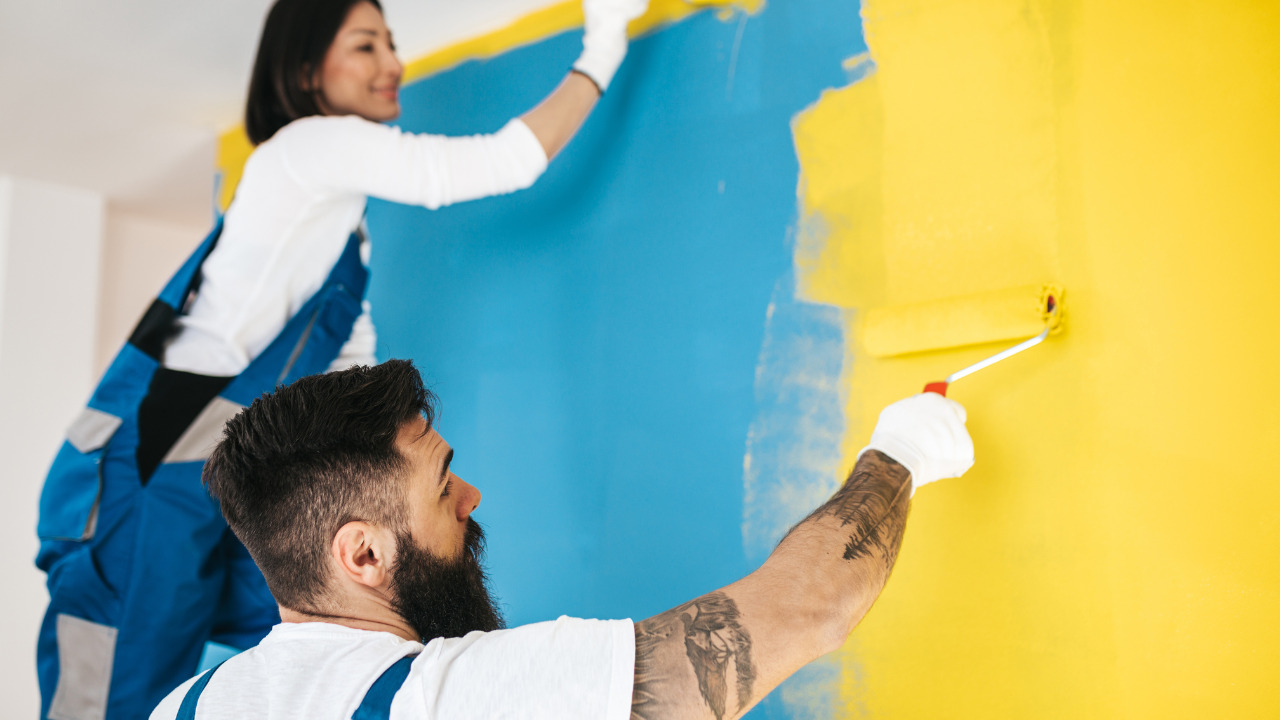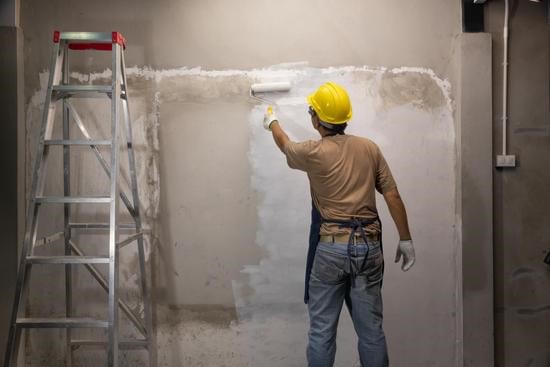Painting baseboards is a tricky thing at the best of times, but painting baseboards with carpets can get even more challenging. It is almost impossible to wipe away paint splatters from the carpet fabric.
Are you wondering how to give your baseboards a fresh coat of paint without ruining the carpet or messing up the trim? The gap between the trim and the carpet is typically much smaller, so it gets even harder to fit a shield of any variety in the gap.
So, what’s the solution? What is the best way to paint baseboards with carpet?
It seems like an impossible task. However, there are a handful of tips and tricks that will make painting baseboards with carpets much easier than you can imagine.
Let us show you some of the easiest options to paint your baseboards without risking the carpet.
Table of Contents
3 Easiest Solutions for Painting Baseboards With Carpets
When it comes to painting trim with carpet, you need to be precise if you want a professional-looking finish.
For most of us, going freehand is out of the question. You need to have some sort of shield to protect the flooring. If you don’t do that, your carpet will most likely end up with paint marks and splatters, damaging the best carpet for your home.
Luckily, we have some professional tips up our sleeve when it comes to painting trim with carpet. Here’s everything you need to know.
Solution 1: Remove, Paint, Reinstall
When painting, carpets are always a challenge to work with. It gets in the way more often than you can imagine. When you try painting baseboards with carpets at home, consider removing the baseboards to paint them. This method is different than with wood floors.
However, removing baseboards is a risky thing to begin with. You may find the process extremely slow detaching the baseboards without doing any damage to the walls. Even if you manage to remove the baseboards, painting them requires more attention to detail.
If the baseboards run all the way to the floor without a gap, make removing and reinstalling a better and long-term solution.
Solution 2: Peel the Carpet Back
Carpets are usually placed next to the wall or baseboards with a tack strip. You need small nails to attach this strip to the backing of the carpet, which will secure it in place.
If you have an advanced understanding of carpet installation, you can peel back the carpet for painting. It is the easiest way to paint baseboards with carpet.
However, this solution is only advisable when a professional is handling the painting, or carpets are a small part of the footprint of your house.
Solution 3: Paint in Place
Don’t all painting projects involve preparation? So, if you have a keen eye for DIY, you can easily update your baseboard paint with a little preparation.
However, painting in place can get more difficult if the baseboards are installed without a gap. Painting in place requires a gap because it allows you to cover and protect the carpet. It also allows access to the entire baseboard for painting.
However, the professional way to do this is using the following:
- Paint guide, paint shield, carpet shiels
- Painter’s tape, masking tape
5 Steps to Paint Baseboards with Carpet
Now that you have decided to paint baseboards with carpets, where to start? We have compiled a step-by-step guide to prepare for painting baseboards with carpet.
The steps are as follows:
Prepare the Baseboards for Painting
You can use a plastic or drop cloth to prepare the baseboards for painting. Lay the drop cloth along the wall where the carpet meets the baseboard. It will prevent any paint splashes or wood dust from ruining the carpet.
You can use any non-porous material in place of a drop cloth. Trash bags can also work if you set them carefully along the wall.
If the room is large, move the drop cloth along the way to where you are painting.
Mask Off the Wall with Painter’s Tape
You need to cover the drywall directly above the baseboard from paint splashes. To do that, lay the painter’s tape along the bottom of the wall.
Painter’s tape isn’t always perfect for this purpose, and paint can sometimes seep through it. That’s why, you need to use it as only a guide, and not a safety measure.
Try to avoid hitting the tape during painting. Repeat this process until every wall in the room is masked with tape.

Use a Paint Guard for Extra Protection
You can provide your carpets with additional protection using a trim paint guard or a metal sheet.
If you are using a paint guard, put the long edge on the tape where it meets the baseboard. Press it down into the carpet and slide it underneath the baseboard so that 100% of the carpet can get covered. Clean the paint guard with a rag after painting each section.
You can also use a metal sheet or any straight edge of a paint guard. An alternative is to use a slat from a window blind.
Apply the Paint
Most people use semi-gloss paints for baseboards and trim. Depending on the sheen you want, you can use oil-based or latex paint. Oil-based paint will last longer, but it will reflect light more brightly.
Take an angled brush, dip it in the paint, and tap it in the tray. You can use a flat brush if you prefer. However, an angle brush will make it easier to reach every nook and corner of the baseboard.
Use back-and-forth strokes to apply the paint. Cover each section of the baseboard 2-3 times with the paint. The baseboards need careful painting, so hold your brush at a 45-degree angle. Only brush the top in the direction of the angle to monitor your accuracy.
Move the drop cloth during painting so that it’s always underneath the section you are painting. Always work from the middle to the top before finishing the bottom.
Cover each section 2-3 times in the middle of the baseboards before moving on. It will help avoid paint drips.

Remove the Tape after the Paint
Give the baseboards time to dry for 2-3 hours. Then, remove the drop cloth and other painting materials. After that, remove the masking tape by pulling its long side and slide it out from under the baseboard.
Pull it out slowly to avoid rubbing any dry paint on the carpet.
Have You Got a Steady Hand for Painting Baseboards?
As the saying goes, ‘the best-proven method is a steady hand and years of training and experience.’
If you think you have a steady hand, you can go freehand while painting baseboards with carpet. However, you should only consider this option if you are an experienced painter in some capacity. You can try the easiest way to paint baseboards with carpet by following the precautions explained above.





